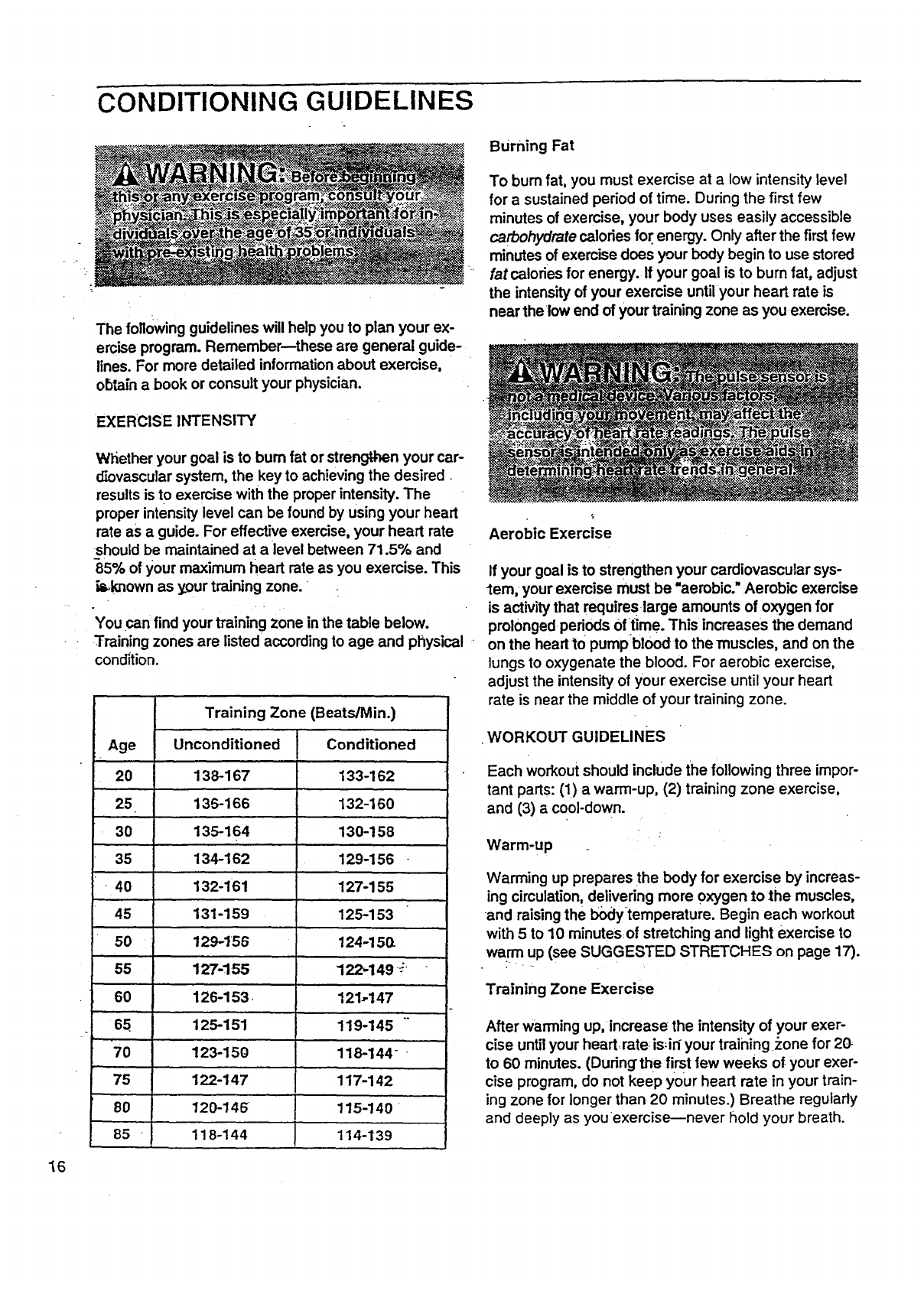
CONDITIONING GUIDELINES
The following guidelines will help you to plan your ex-
ercise program. Remember--these are general guide-
lines. For more detailed information about exercise,
obtain a book or consult your physician.
Burning Fat
To bum fat, you must exercise at a low intensity level
for a sustained period of time. During the first few
minutes of exercise, your body uses easily accessible
carbohydratecalories for. energy. Only after the firstfew
minutes of exercise does your body begin to use stored
fat calories for energy. If your goal is to burn fat, adjust
the intensity of your exercise untilyour heart rate is
near the low end of your training zone as you exercise.
EXERCISE INTENSITY
W_ether your goal is to bum fat or strengthen your car-
diovascular system, the key to achieving the desired
results is to exercise with the proper intensity. The
proper intensity level can be found by using your heart
rate as a guide. For effective exercise, your heart rate
•should be maintained at a level between 71.5% and
85% of your maximum heart rate as you exercise. This
_known as y_ourtraining zone.
You can find your training zone in the table below.
Training zones are listed accordingto age and physical
condltion.
Training Zone (Beats/Min.)
Age Unconditioned Conditioned
! 20 138-167 133-162
25 13.6-166 132-160
30 135-164 130-158
35 134-162 129-156
• 40 132-161 127-155
45 131-159 125-153
50 129-156 124-150-
55 127-155 122-149 _
60 126-153. 121-147
.o
65 125-151 119-145
70 123-150 118-144"
75 122-147 117-142
80 120-146 + 115-140
85 - 118-144 114-139
Aerobic Exercise
If your goal is to strengthen your cardiovascular sys-
"tem, your exercise must be "aerobic." Aerobic exercise
is activitythat requires•large amounts of oxygen for
prolonged periods 0fltime. This increases the demand
on the heartlo pump blood to the muscles, and on the
lungs to oxygenate the blood. For aerobic exercise,
adjust the intensity of your exercise until your heart
rate is near the middle of your training zone.
•WORKOUT GUIDELINES
Each workout should include the following three impor-
tant parts: (1) a warm-up, (2) training zone exercise,
and (3) a cool-down.
Warm-up
Warming up prepares the body for exercise by increas-
ing circulation, delivering more oxygen to the muscles,
and raising the b0dytemperature. Begin each workout
with 5 to 10 minutesof stretching and light exercise to
warm up (see SUGGESTED STRETCHES on page 17).
• Z " - ..
Training Zone Exercise
After warming up, increase the intensity of your exer-
cise untilyour heartrate is,in your training _'one for 20
to 60 minutes. (During'the first few weeks of your exer-
cise program, do not keep your heart rate in your train-
ing zone for longer than 20 minutes.) Breathe regularly
and deeply as you exercise--never hold your breath.
16


















